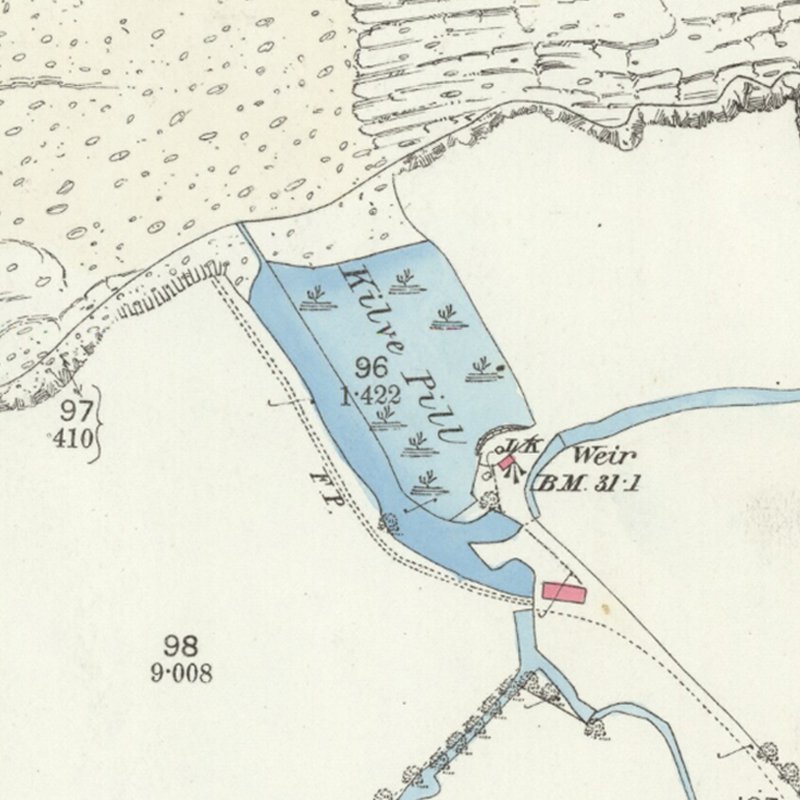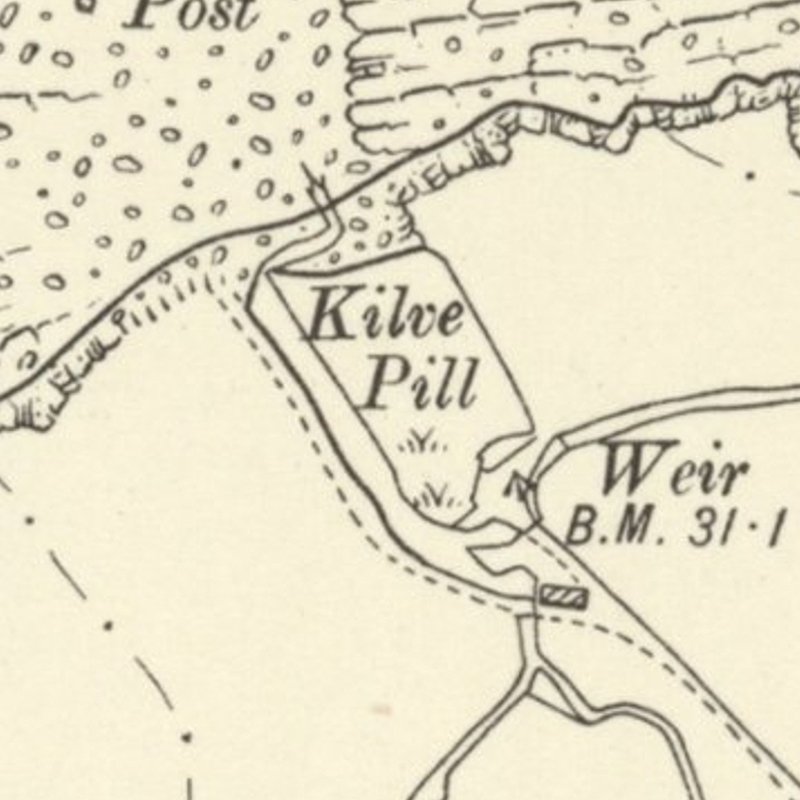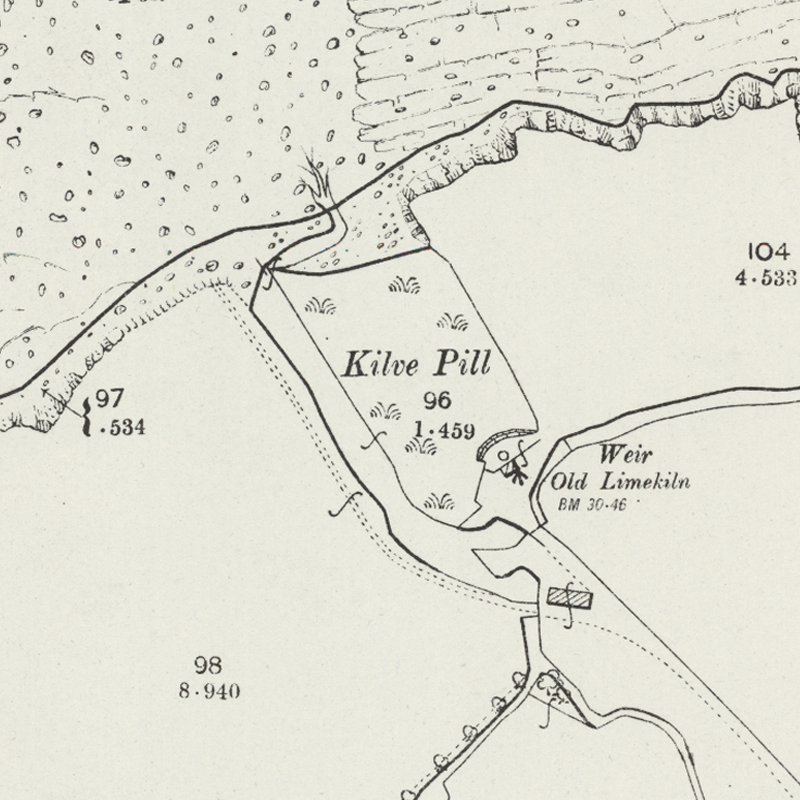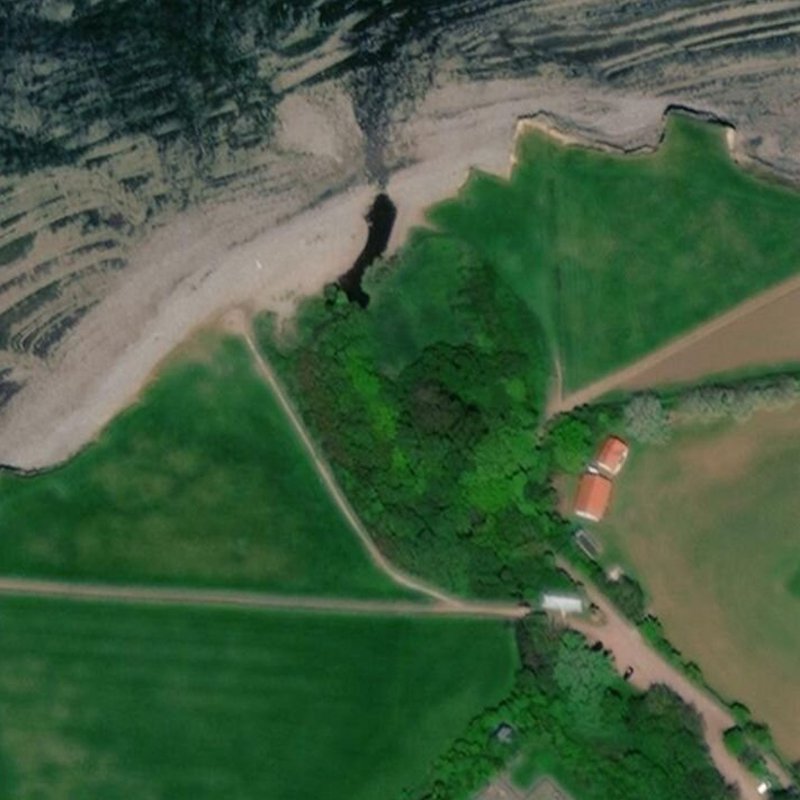Kilve Oil Works
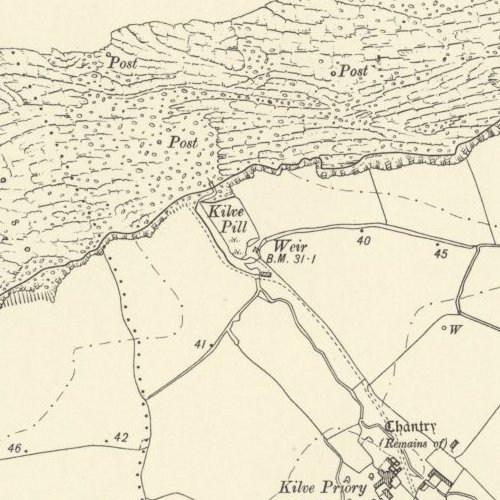
A grand deception promoted by Dr. Forbes Leslie; "one of the greatest living experts in the petroleum world"; who, only a few years previously had been the driving force behind Setch oil works in Norfolk. Both schemes made extravagant and unsubstantiated claims about oil shales found in the Kimmeridge clays. In each case, the press was courted and prominent supporters were recruited to endorse ambitious public share issues.
At Kilve, Forbes Leslie sought to establish Shaline Ltd, a limited company with a capital of a million and a half pounds, chaired by the Duke of Atholl. The company planned to erect crude oil works at Kilve, build an eleven mile long light railway connecting Kilve with Bridgwater, and construct an oil refinery and dock at Combwich.. Plans for the light railway were put before the Ministry of Transport in mid 1924 and were subject to local consultations. Beyond this, little progress was made with the grand enterprise, and no evidence has been found that Shaline Ltd was ever launched as a public company.
Press stories suggested that oilshale was "discovered" at Kilve in 1914, and that by 1921 various bores had been sunk to establish the extent of the shale reserves. Forbe Leslie's operations were centred on Kilve Pill, a creek and landing point that had been in use since the middle ages, and was used during the 19th century to import fuel for a limekiln. The 1888 OS maps shows the limekiln on a promontory extending into the pill, and a rectangular shed slightly to the south, which perhaps might have been used for storage of lime.. This shed, which survives today, became the base for the oil shale operations.
A newspaper account, published in November 1923, includes images of the shed, which was described as containing a "furnace and chimney" with a zig-zag arrangement of pipes on an outer wall to condense oil vapours which then collected in a barrel.
This home-spun arrangement was extended in 1924 by construction of the brick-encased retort described as "similar to the type used in Scotland" and capable of processing two and a half tons of shale per day. The surviving remains are difficult to interpret and must have been intended for experimental purposes rather than commercial purposes. The structure contains a single vertical cast iron retort of a rounded rectangular cross section, similar to that used in Young & Bielby retorts. Although of a smaller scale, the retort has similarities to experimental retorts used at Pumpherston, except that brickwork would have encased the full structure rather that having the cast iron vessel exposed. The current odd appearance may be a consequence of the retort being partly dismantled, and the ground around the retort having been built-up slightly. The photo of the retort under construction in 1924 suggests that the brickwork originally extended to the top of the iron vessel. Shale would have been loaded into the top of the retort, presumably having been hauled up onto a timber staging. The exposed ironwork reveals the circular pipe branching off the main vessel through which the hot oil vapours would have been drawn off. The brickwork contains a brick arch on the eastern face of the retort, presumably for drawing off the spent shale, and remains of flue on the northern face, perhaps connecting to a furnace and chimney. Various gaps in the brickwork indicate where timber structures might have linked into the retort.
Mapped by the Ordnance Survey of c.1904, showing the general area of the works.
Number of retorts: One experimental retort.
Archive images
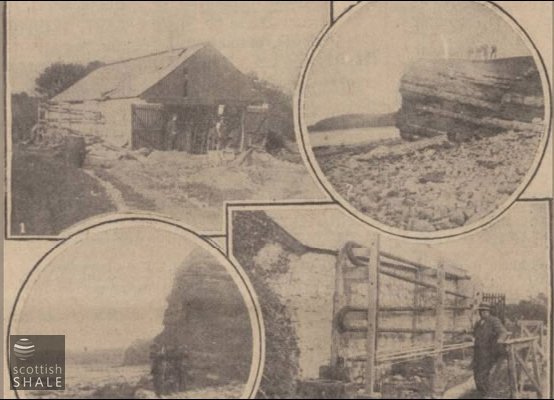
Original caption in the Western Daily Press, 15th November 1923, "The shed, which is built about 50 yards from the seashore, contains the machinery for extracting oil from shale. On the left side of the building are the pipes of the oil condenser. The shale is broken into small pieces, and put into the furnace shown beneath the chimney the entrance of the shed."... "The oil condenser plant. During our photographers visit a stream visit a stream of oil much same colour and thickness of motor lubrication oil was running into the tank near the bush on the left".
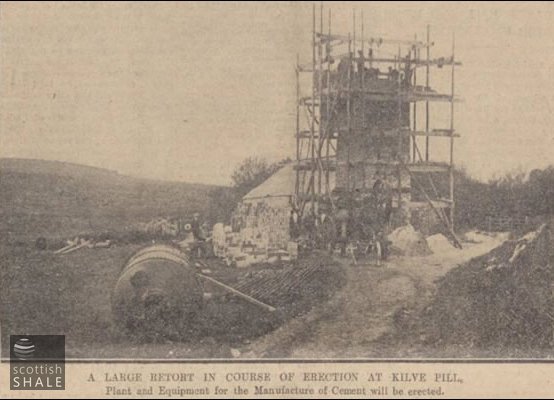
Original caption in the Western Daily Press, 24th May 1924 "Developments at Kilve - a large retort in course of erection at Kilve Pill."
Recent images
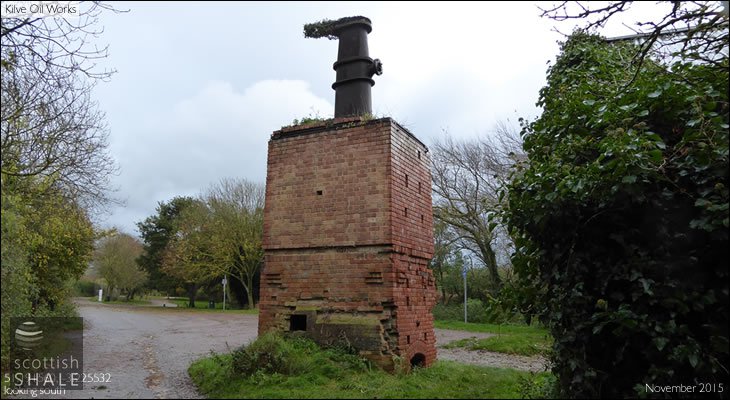
Retort, with ivy covered shed building. Looking South. November 2015.
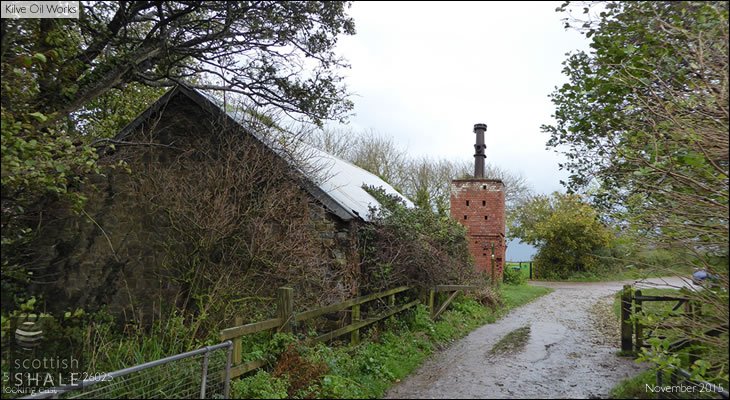
Shed building, with retort beyond. Looking East. November 2015.
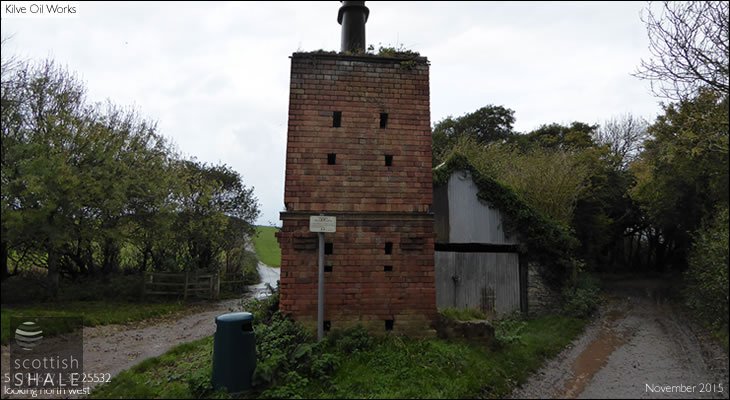
Retort and shed building. Looking North West. November 2015.
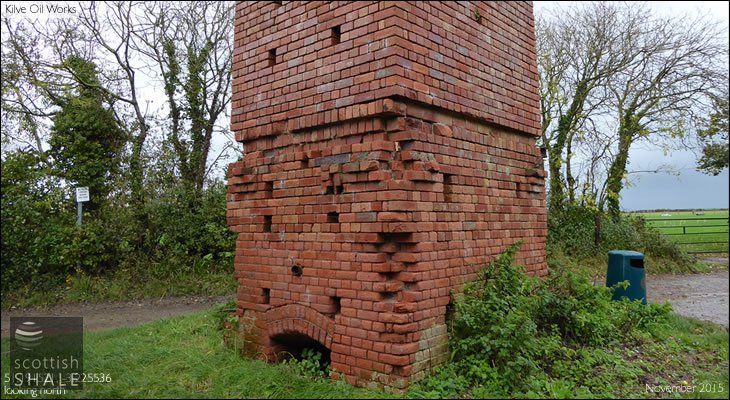
Close up, showing brick arch. Looking North. November 2015.
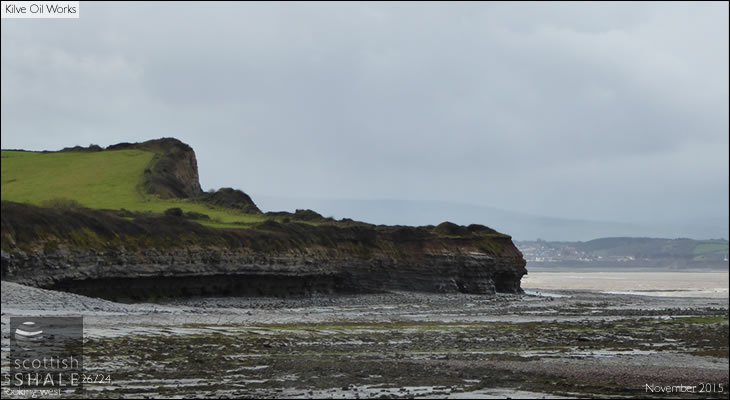
Shore at Kilve, showing beds of shale. Looking West. November 2015.
BORING FOR OIL. A WEST SOMERSET EXPERIMENT.
An interesting series of experiments at Kilve, West Somerset, is now being held up through lack of fuel owing to the coal dispute. For years the presence of oil-producing shale in the district has been known to mineralogists and geologists, and last year there resided in the district for a considerable time Dr. Forbes Leslie, one of the greatest living experts in the petroleum world. His visit doubtless had a bearing upon the experiments it is now proposed to make. Of the presence of oil-shale there is abundant evidence, but whether it is capable of producing oil in paying quantities has yet to be determined.
Taunton Courier, and Western Advertiser, 4th May 1921
.......
OIL SHALE IN SOMERSET: OPERATIONS AT KILVE.
The delightful little village Kilve, on the Somerset coast, six miles from Williton may change its character somewhat experiments which are now being conducted there are successful, for it might become the centre of important oil industry. Boring operations were started a little while ago by the Aqueous Works Boring Proprietary Co.. Ltd.. Lambeth, in the centre of the old Priory fishpond, but it is yet to be proved whether the site is capable producing oil bearing shale in paying quantities. Our photos show the scene of the boring work arid a bit of the picturesque village Kilve on the Bridgwater-Minehead road, and the Priory ruins. In the course of an interview a gentleman close in touch with the work said it was not expected that there was any free oil in the locality. There was no question, he said, of an oil well. It was known, however, that there was abundance of shale on the spot. On the cliff face, only a few hundred yards away, a considerable outcrop was visible. Indeed, for several miles this outcrop can be seen the cliff face, extending in some places to depth of a 100 feet, intersected at intervals by bars of limestone. Some distance the valley there are other outcrops where the strata comes to the surface. Samples of the outcrop have been taken and thoroughly tested. These, said our informant, have given very encouraging suit, but it was thought that they are too much weathered to give accurate idea of the value of the deposit of the shale. In order to make quite sure as to the possibilities of the undertaking, a bore hole is being sunk. After this has been driven to sufficient depth other similar holes may be driven. There is no question that there is large deposit of oil bearing shale on the spot, and the question be settled is whether the shale is rich.
Western Daily Press, 24 May 1921
.......
One day during 1914 a gentleman walking along the foreshore, below Bridgwater Bay, on the Somerset coast. He was a mining engineer recently home from South Africa. In his path was a piece of dark, slate coloured stone. He kicked aside, and then the whim took him to pick up and examine it. From that trivial incident it is hoped that a new industry may grow on this beautiful bit of the Somerset coast. The engineer was Mr John Berry, and the chunk of stuff which chance placed in his way proved to be oil shale, Oil shale is not common product of nature, but is found in Midlothian and Dorset, and elsewhere. Great quantities exist in America for utilisation when the oil wells are expanded. If all that is claimed for it be realised, the Somerset discovery is a romance. Throughout the ages this bit or the coast line has stood, changing very little substance or aspect; yet was not until the year 1914 that its possible value as a commercial proposition was discovered. Oil shale had never been found in Somerset before, and the geological survey had placed on record that the cliffs hereabouts were composed of lime stone and mud shale.
A WONDER OF NATURE.
In discussing the subject with the writer Williton, a picturesque old place between Watchet and Minehead, Dr. Forbes Leslie, who has been associated with Mr Berry in developing the oil shale field, much interesting information was disclosed. Dr. Leslie took a piece the material about three inches in thickness, and just as heavy as lump of slate of similar size would be. It was so hard substance that there seemed much chance of its containing oil as of a stone yielding blood. Yet when a fragment, was broken off and placed on the fire it quickly flamed and gave off unmistakable fumes. Petroleum found in America and Russia, according to the Doctor, came from the same kind of shale. Scientists are not agreed as to the origin of petroleum, but, according to the view of this expert, deep down in the earth the heat which supplied by natural conditions distils the oil, which accumulates in sandstone (cavities underground). Here it remains until some lucky' prospector literally "strikes oil. Shale which occurs on or near the surface is not distilled by natural means, so man ingenuity has to do the work if the oily constituents are needed. The first, process is to distil the crude oil from the shale in a retort or closed chamber, heated all round. This first product which was shown the writer was crude oil of a dark brown colour. Raising the temperature of the still crude petrol is driven off. Another jump in the temperature to 220 degrees provides paraffin; Add another 80 degrees of heat, and there comes over fuel oil. Raise the temperature still higher—viz., to 340 degrees—and the result is a fine lubricating oil. While 430 degrees gives remarkably heavy oil similar in quality. Dr. Leslie affirmed, to that which American exporters are now prohibited from sending out of the country, and the value of which is £40 a ton.
BY-PRODUCTS OF SHALE.
The value of the shale does not end with its oil extracted from it. From a residue resembling black sealing wax, Dr. Leslie, said, a wonderfully fine varnish is produced, while the shale which comes from the furnace is valuable for mixing lime stone and making cement. There is, fact, the Doctor affirmed, an almost inexhaustible amount of material for making cement. The discovery of shale, Dr. Leslie went on to say, had created great interest, and many experts—mining, geological, and chemical —had made investigations with completely satisfactory results. Experimental plant had been erected at Kilve to test the commercial basis of the discovery, and the most sanguine anticipations had been formed. The field extends from Watchet to the river Parrett, and runs inland for considerable distance. The outcrop is ridges from 200 to 300 feet high, Which makes the quarrying proposition comparatively easy. It was gathered that company was proposed to be formed to develop the oil shale. According to the scheme outlined, works would be erected near Watchet capable of dealing with 1.000 tons of shale per day, and when those were completed other works would be set up at another point. The project included, Dr. Leslie added, a new railway line from Bridgwater to Combewich.
Western Daily Press, 15th November 1923
.......
SOMERSET OIL SHALE. DEVELOPMENT CARRIED STEP FURTHER.
A progressive step in connection with the proposed development of oil shale in West Somerset has taken place, draft order authorising the construction light railway from Bridgwater to Kilve, distance of eleven miles, having been deposited with the Ministry Transport. The order provides for the commencement of the railway a junction with Northgate brewery siding at Bridgwater, connecting with the wharf and dock branch of the Great Western Railway Company, whom the order gives power to enter into arrangements for the construction, maintenance, and management of the railway. The capital of the company incorporated by the order is set out £200,000, 20,000 shares of £10 each, and the Great Western Company and Shaline, Ltd., the company to the oil shale industry, are given powers to subscribe towards the capital of the incorporated company. Mr. Woodford Fawcett and Mr. Samuel Berry (Bridgwater) are mentioned as the first directors of the company.
Western Morning News, 14th May 1924
.......
OIL RESOURCES OF SOMERSET.
At the Royal Society Arts in London last night, a paper on Somerset Oil-Shales compiled Messrs H. G. Shatwell, Alfred W. Nash, and J. Ivor Graham, was read. Much of the general part has already been published in The Western Morning News, but the paper contained a great deal of technical information. Oil shales, it was stated, extended for ten or twelve miles along the coast running west to east, from the vicinity of Blue Anchor, and they appear as beds of black and brown shales alternating with bands of argillaceous limestone to a distance of one to three miles inland. The easiest method of working initially would be by quarrying but mining would soon have to resorted to. It was doubtful whether the limestone would make a safe roof, and it might be safer to use shale for the purpose. Results of assays and steam distillations led to the belief that dry distillation would be preferable to steam distillation for would be preferable for maximum oil yield. A two-gallon sample of oil was taken from one of the tanks at Kilve. The oil was produced by the distillation of shale in a vertical retort similar to the type used in Scotland, the throughput of the plant being 2.5 tons a day. The oil was dark brown in colour, and was less sweet in odour than that the Scottish shale. In the discussion Dr W.R. Ormandy said that when heard that the Somerset oil shale were not likely to be of commercial value and that nearly half the oil was lost in the process of refining, his commercial instincts overcame his scientific curiosity, and lost interest in the paper.
Western Morning News, 3rd December 1924
.......
OIL FROM SHALE IN SOMERSET
Mr Vemon Bartlett (Bridgwater) asked the Secretary for Petroleum in the House of Commons on Tuesday, whether he could yet report on the value of oil and cement to be obtained from shale at Kilve and East Quantoxhead. in Somerset. Mr. Geoffrey Lloyd replied that investigation of these oil shales had been carried out by the Department of Scientific and Industrial Research. It would not be in the public interest to make a statement about the results. Asked why the Mines Department were still "dilly-dallying" about this matter, which had been the subject of previous inquiry, Mr. Lloyd replied that it was desired to more fully into the matter.
Taunton Courier, and Western Advertiser, 23rd November 1940


